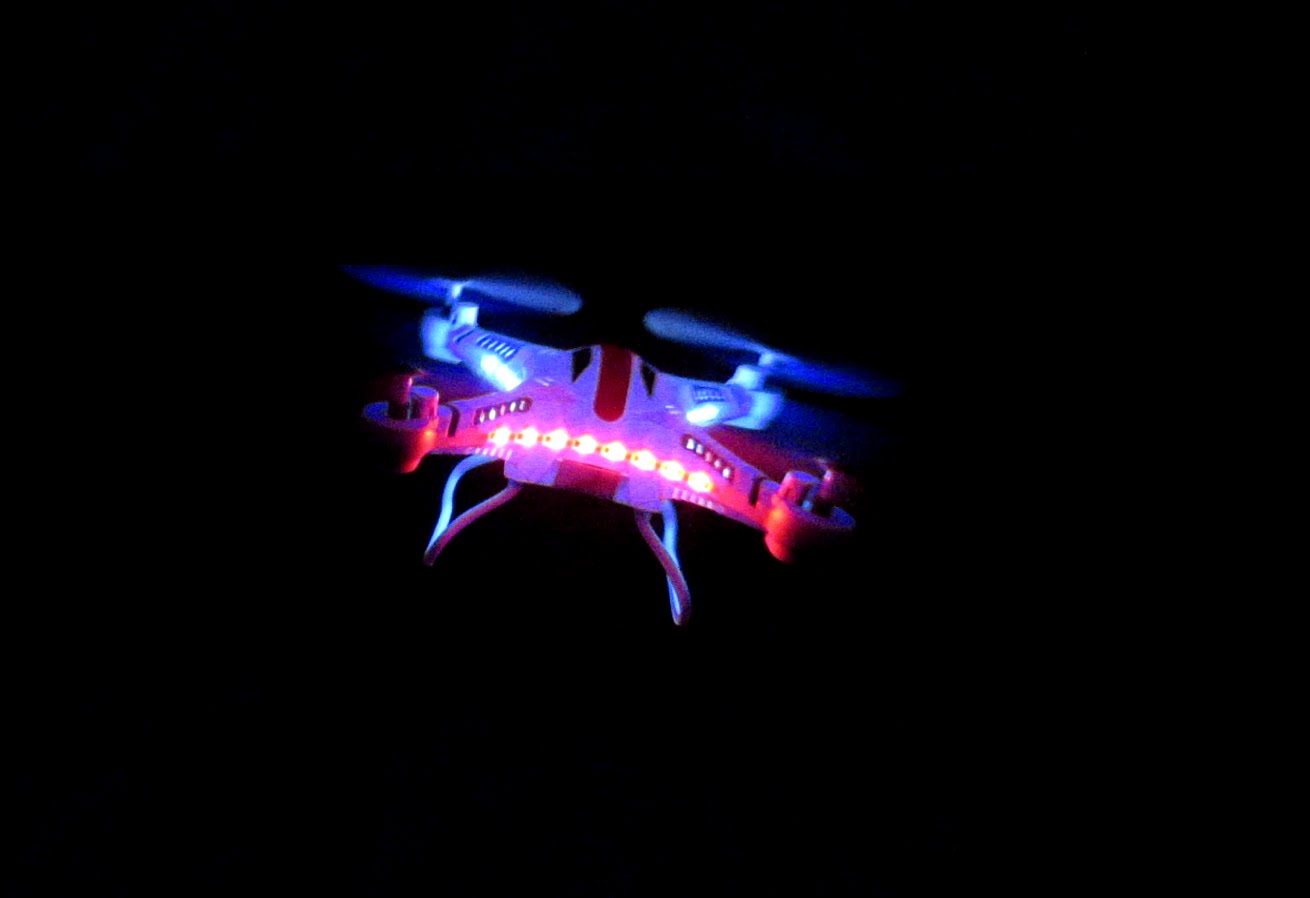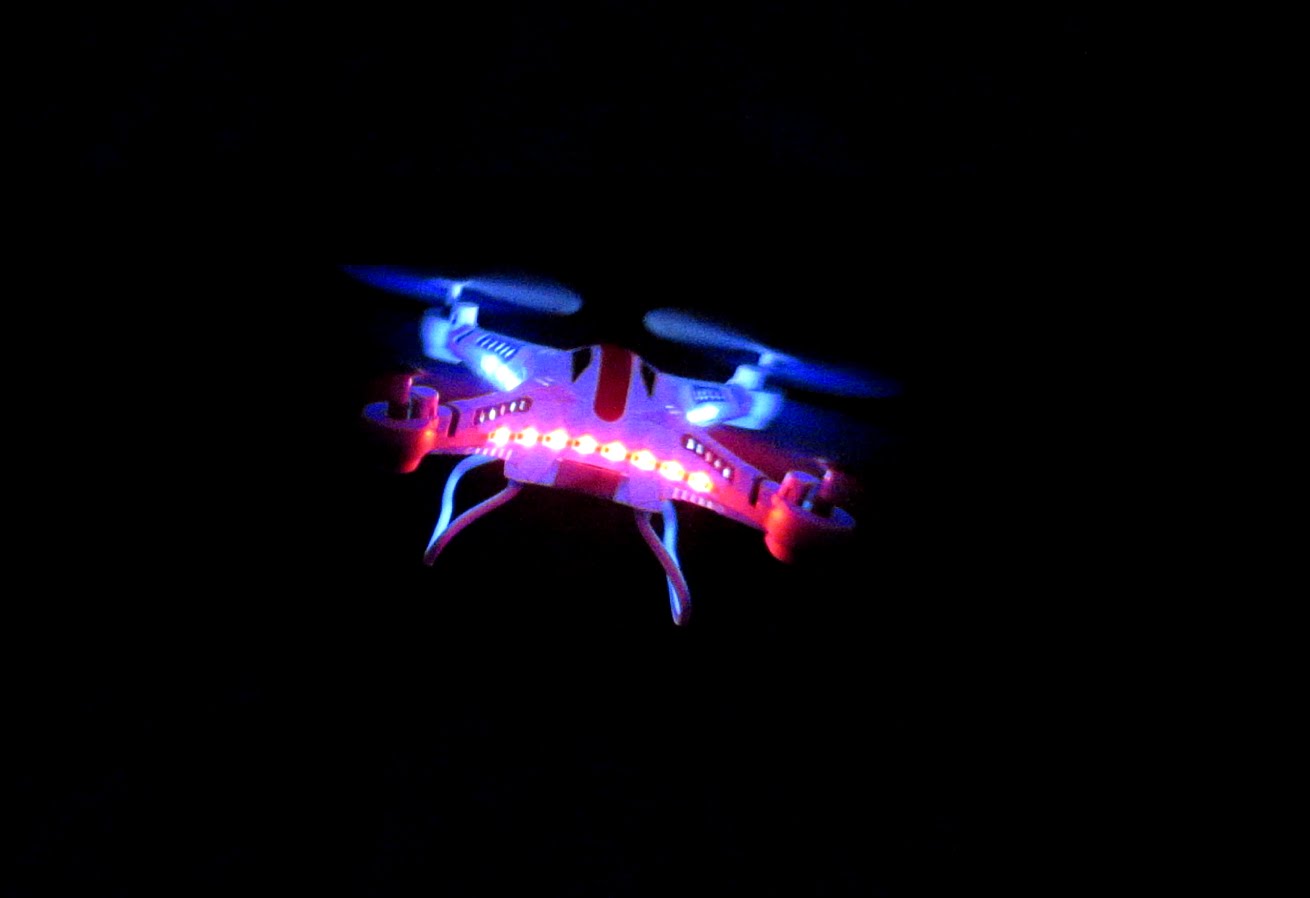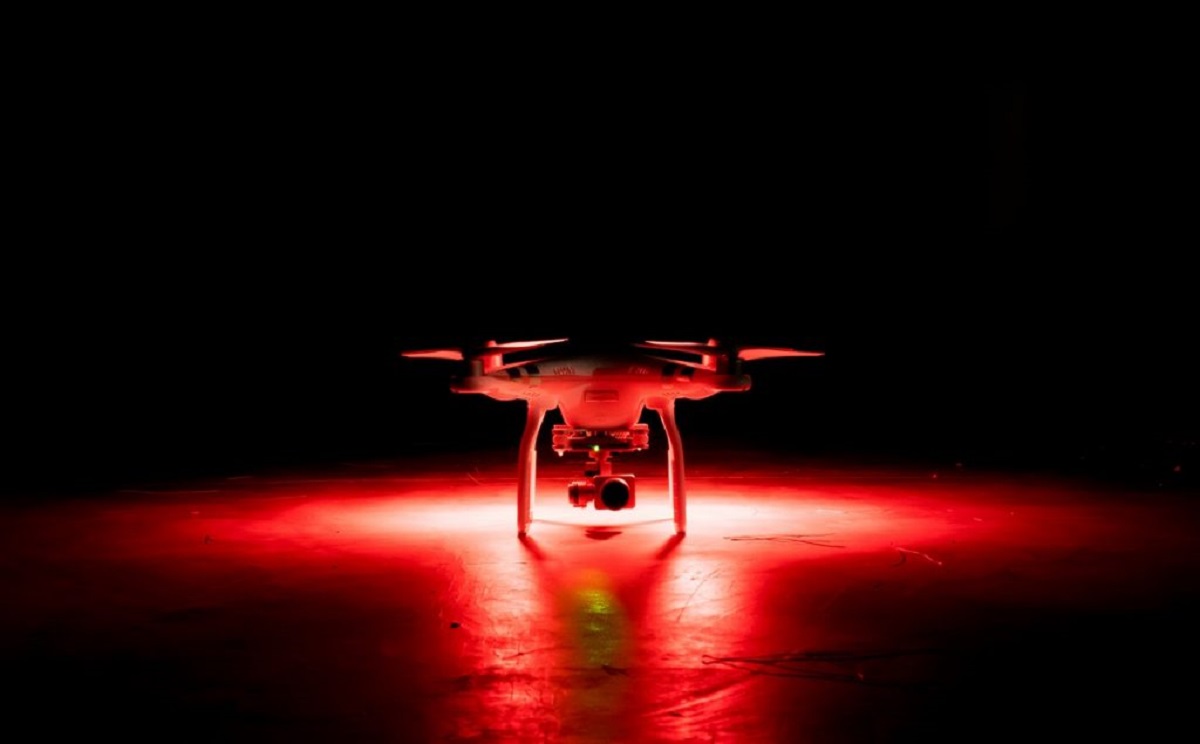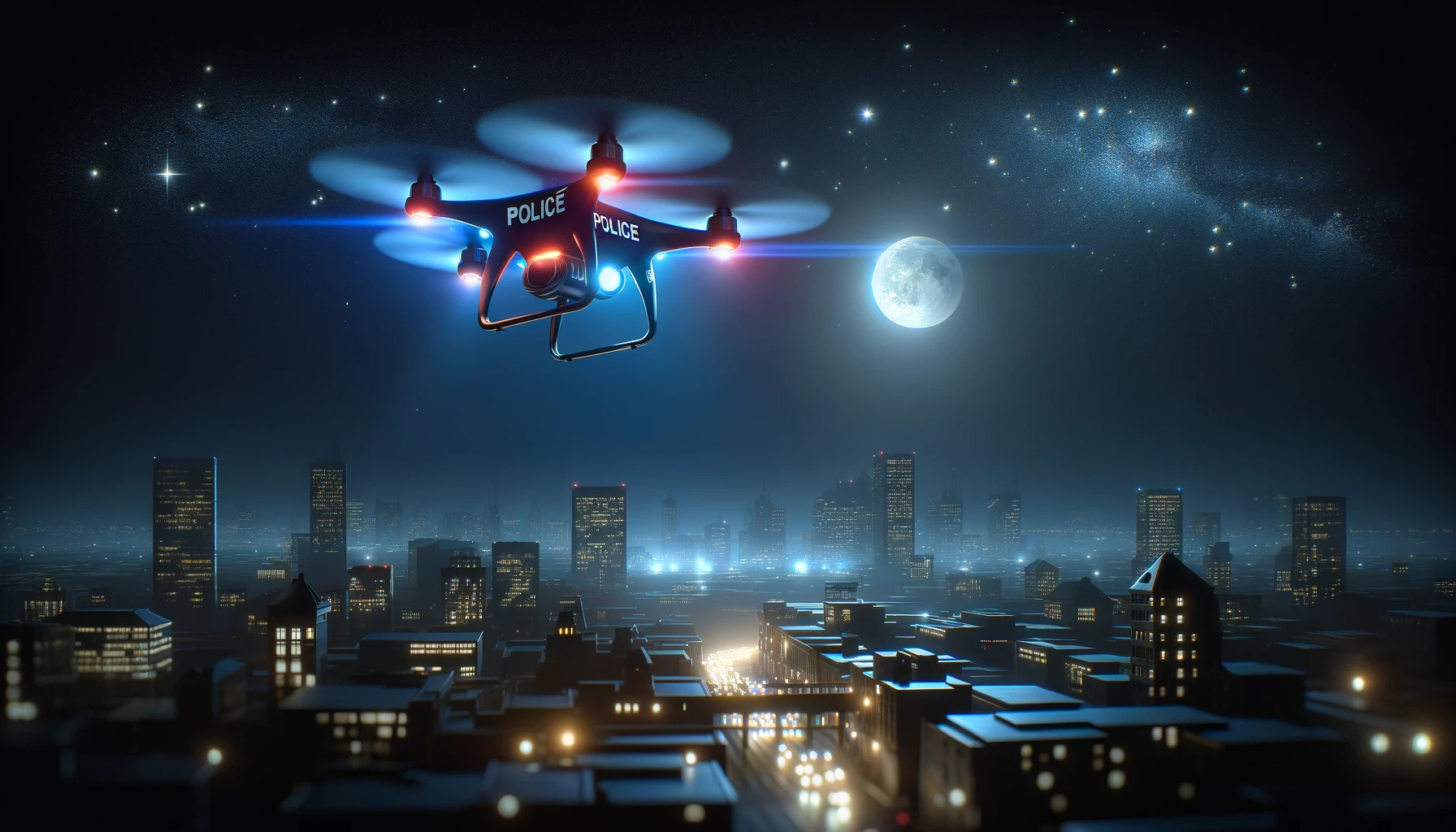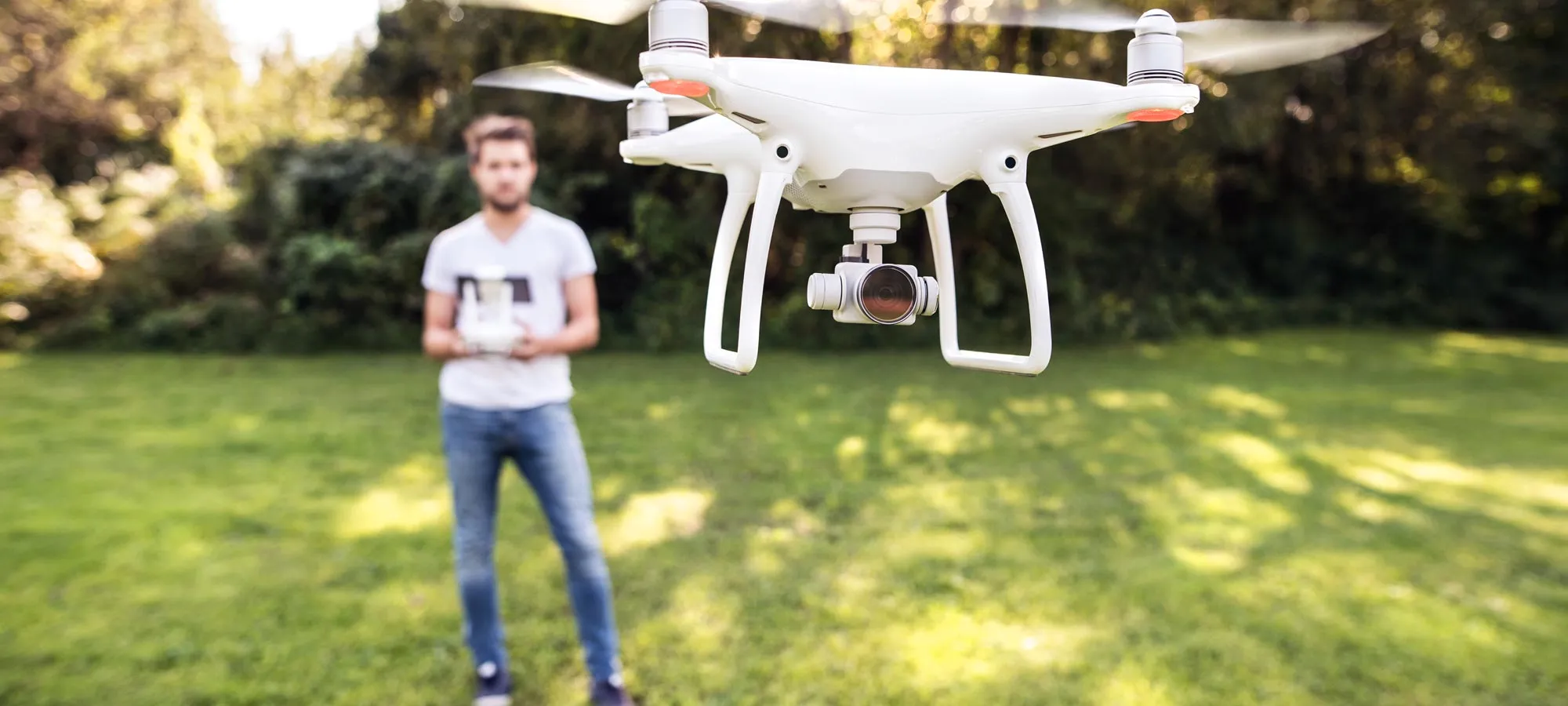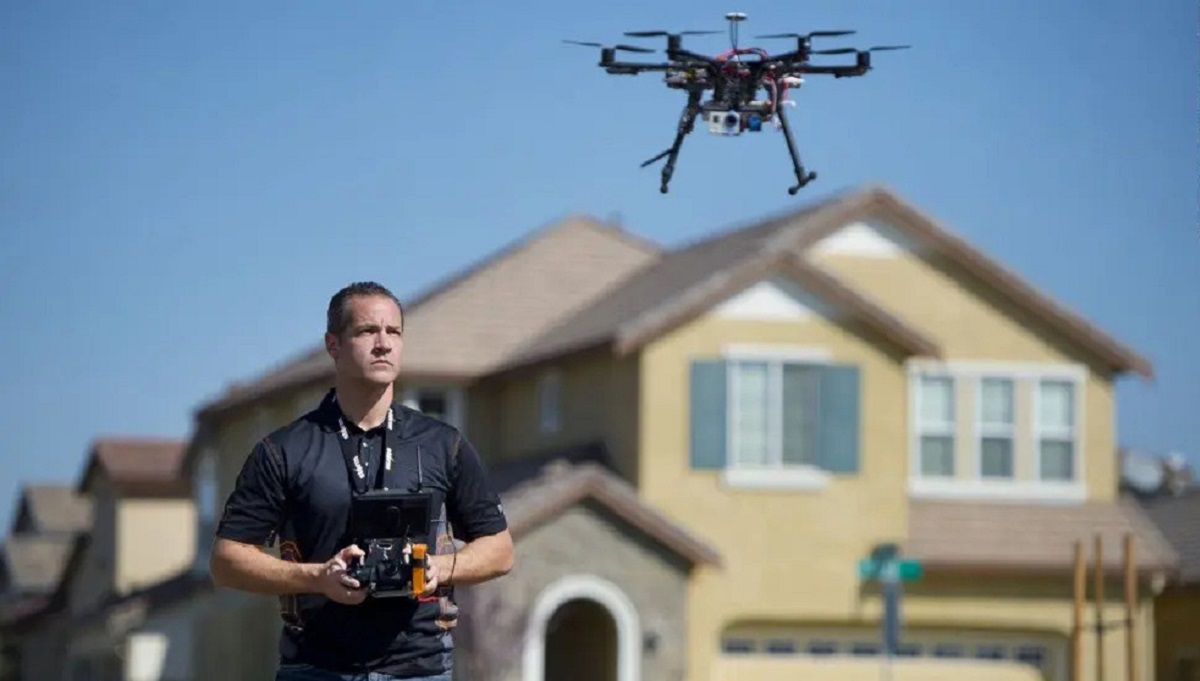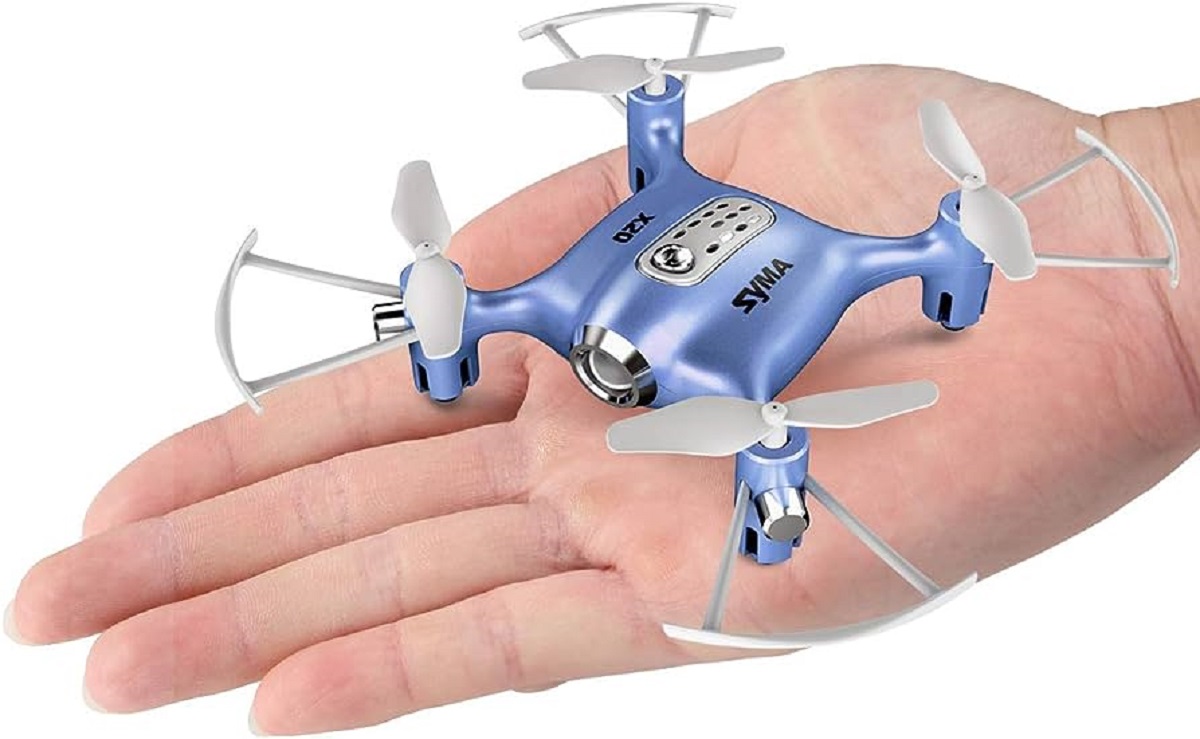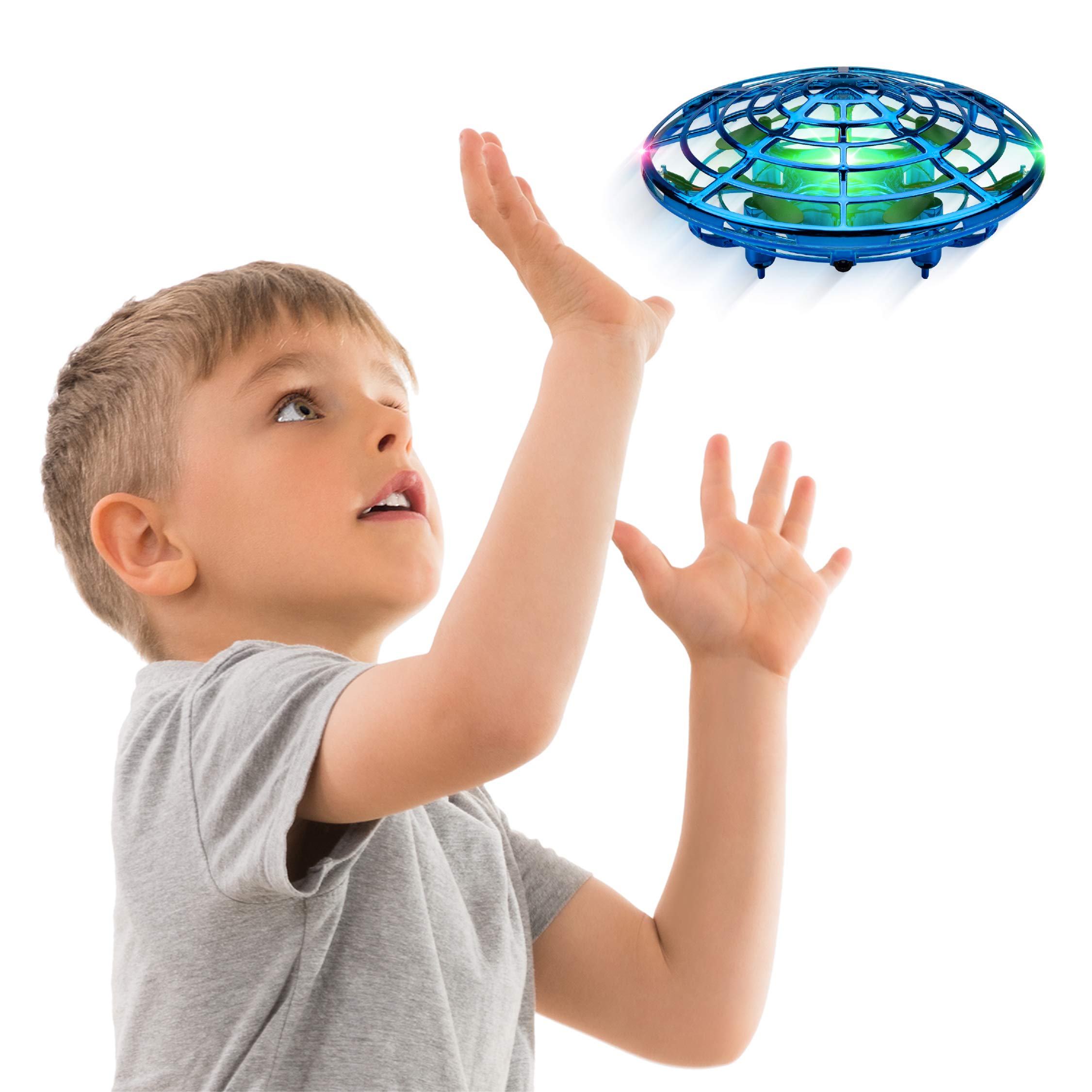Introduction
Over the past few years, the use of drones has become increasingly prevalent in various industries. These unmanned aerial vehicles (UAVs) have proven to be versatile tools with a wide range of applications. While drones are often associated with recreational activities or aerial photography, they are also commonly used for business and commercial purposes. One question that arises when considering the use of drones is why they would be flying at night.
Operating drones at night may seem unconventional, but there are several reasons why this practice is becoming more common. Whether it is for security and surveillance, search and rescue operations, or even environmental research and monitoring, drones offer numerous benefits when utilized during nighttime hours.
This article will explore the different scenarios and industries where drones are used during the night, examining the advantages and limitations of flying UAVs when natural light is limited. By understanding why drones are deployed at night, we can gain insight into the practicality and effectiveness of these aerial devices in various fields.
Security and Surveillance
Drones have revolutionized the field of security and surveillance by providing enhanced capabilities for monitoring and protecting sensitive areas. When deployed at night, drones equipped with infrared cameras or thermal imaging sensors can effectively detect and track intruders or suspicious activities that might go unnoticed during daylight hours.
One significant advantage of using drones for security and surveillance purposes at night is their ability to operate covertly. With minimal noise and discreet flight patterns, drones can maintain a low profile and conduct surveillance without drawing attention. This enables security personnel to gather valuable intelligence about potential threats or unauthorized activities without alerting anyone on the ground.
Furthermore, drones equipped with advanced imaging technologies can provide real-time video feed to security personnel, allowing them to respond quickly and appropriately to any suspicious activity. This visual data can also be recorded for future analysis or used as evidence in legal proceedings.
In urban areas, drones can navigate through narrow alleyways and inaccessible rooftops, providing a comprehensive view of the surroundings that may be difficult to achieve with traditional surveillance methods. Moreover, their ability to fly at varying altitudes and angles allows for a more comprehensive and detailed assessment of the situation, ensuring nothing is missed.
However, it is important to note that flying drones at night for security and surveillance purposes must comply with legal and privacy regulations. The use of drones in this context should always be conducted in accordance with local laws, ensuring that privacy rights are respected and that recorded data is handled appropriately.
Search and Rescue Operations
When it comes to search and rescue operations, time is of the essence, and every minute counts. In such critical situations, drones offer a valuable advantage, especially when deployed at night.
During nighttime search and rescue operations, the use of drones equipped with infrared or thermal cameras can significantly increase the chances of locating missing persons or stranded individuals. These cameras can detect body heat signatures, making it easier to identify individuals, even in challenging or remote environments.
With their ability to cover large areas quickly and efficiently, drones can complement ground search teams by providing an aerial perspective and helping to narrow down search areas. This is particularly valuable in situations where time is limited or access to certain areas is difficult.
In addition to their surveillance capabilities, drones can also be equipped with speakers or spotlights, enabling search and rescue teams to communicate with and locate individuals in distress. This can be especially useful when dealing with difficult terrains or when searching in densely populated areas.
Moreover, drones equipped with GPS technology can create detailed maps of search areas, marking areas that have already been covered and optimizing the search strategy. This not only saves time but also ensures thorough coverage of the search area.
It is important to note that drone operators involved in search and rescue operations must have the necessary training and expertise to navigate challenging conditions, especially at night. They should be familiar with the equipment and be able to handle any unforeseen circumstances that may arise.
Overall, the use of drones in search and rescue operations at night has proven to be an effective and efficient addition to traditional search methods. By leveraging their aerial capabilities and advanced technologies, drones can help save lives by improving the overall efficiency and success rate of search efforts.
Environmental Research and Monitoring
Environmental research and monitoring play a crucial role in understanding and preserving our natural ecosystems. Drones have emerged as valuable tools in this field, offering unique advantages for conducting research and collecting data, especially during nighttime hours.
One of the key benefits of using drones for environmental research and monitoring at night is their ability to cover large areas efficiently. Equipped with specialized cameras and sensors, drones can capture high-resolution images and collect data on various environmental factors, such as temperature, humidity, and pollution levels.
During nighttime hours, the absence of natural light can provide better insights into certain aspects of the environment. For example, studying nocturnal animal behavior or monitoring the presence of rare species that are more active during the night can provide valuable data for conservation efforts.
Additionally, drones can be deployed in areas that are difficult to access by traditional means, such as dense forests or remote wildlife habitats. This allows researchers to gather information from challenging terrains without disturbing the natural habitat or risking human safety.
Using drones equipped with thermal imaging cameras, researchers can also monitor vegetation health and detect anomalies, such as wildfires or crop diseases, which might not be visible during daylight hours. By identifying these issues early on, appropriate measures can be taken to mitigate potential damage.
Furthermore, drones can assist in mapping and monitoring changes in coastal areas and wetlands, providing valuable information for understanding erosion patterns, sea-level rise, and the impact of human activities on these fragile ecosystems.
However, it is crucial to ensure that drones are operated responsibly and with consideration for wildlife and their habitats. Researchers must adhere to ethical guidelines and obtain necessary permits to minimize any potential disturbance caused by drone operations during nighttime.
Overall, the use of drones for environmental research and monitoring at night expands our understanding of ecosystems and helps to develop more effective conservation strategies. By taking advantage of their aerial capabilities and technological advancements, drones have become indispensable tools in studying and protecting our planet.
Filmmaking and Photography
Drones have revolutionized the world of filmmaking and photography, enabling professional filmmakers and photographers to capture stunning aerial shots and achieve perspectives that were once only possible with expensive helicopter rentals or crane setups. Flying drones at night opens up even more creative possibilities and adds a distinct visual appeal to the captured footage or images.
When used for filmmaking, drones equipped with high-quality cameras can capture breathtaking night scenes and create a cinematic atmosphere. This is particularly advantageous for capturing cityscapes, fireworks displays, or dramatic lighting effects that are more prominent during nighttime hours.
In addition to aesthetics, drones provide a practical solution for filmmakers who need to shoot in low-light conditions. By utilizing advanced camera technologies, such as low-light sensors and night vision capabilities, filmmakers can achieve high-quality footage even in challenging lighting environments.
Moreover, drones offer unparalleled mobility and maneuverability, allowing filmmakers to capture dynamic and fluid shots that were once only possible with expensive equipment or specialized camera rigs. This level of flexibility enhances storytelling and adds depth to the visuals, making the final product more engaging and memorable.
For photographers, flying drones at night opens up a whole new world of creative opportunities. Whether capturing long-exposure shots of starry skies or photographing cityscapes adorned with vibrant lights, drones provide a unique perspective and allow photographers to experiment with new techniques.
Furthermore, drones with obstacle avoidance systems and stability features make it easier for photographers to accurately frame their shots, even in challenging lighting conditions. This ensures sharp and well-composed images without the risk of camera shake or blur.
It is worth noting that when operating drones at night for filmmaking or photography purposes, safety and legal regulations must be strictly followed. This includes obtaining necessary permits, ensuring the drone’s visibility with appropriate lighting, and respecting privacy rights of subjects or locations being filmed or photographed.
Overall, drones have transformed the world of filmmaking and photography, capturing stunning visuals and adding a new dimension to storytelling. Their ability to fly at night expands creative possibilities and allows professionals to capture breathtaking shots that were once out of reach.
Agricultural Monitoring and Spraying
The agricultural industry is one of the many sectors that have benefited greatly from the use of drones. These aerial devices have proven to be invaluable for agricultural monitoring and spraying, with their ability to operate efficiently both during the day and at night.
When it comes to monitoring crops, drones equipped with high-resolution cameras and multispectral sensors can gather vital data about plant health, nutrient levels, and irrigation needs. This information allows farmers to make informed decisions and implement precise agricultural practices, ultimately leading to increased yields and optimized resource management.
By flying drones equipped with infrared or thermal imaging cameras at night, farmers can detect variations in crop temperature and identify areas that may require immediate attention. This enables them to address irrigation issues, disease outbreaks, or pest infestations promptly, reducing crop losses and improving overall productivity.
In addition to monitoring, drones also play a crucial role in agricultural spraying at night. Equipped with precision spraying systems, drones can efficiently apply fertilizers, pesticides, and herbicides to crops, even in low-light conditions. This allows farmers to maximize their spraying operations by extending their work hours and covering more acres during the night, when winds are often calmer.
The use of drones for agricultural spraying offers several advantages. These aerial devices can precisely target specific areas, ensuring that the right amount of chemicals is applied only where needed, reducing waste and environmental impact. Drones can also navigate easily through uneven terrains or challenging crop layouts, reaching areas that may be inaccessible or time-consuming for traditional spraying methods.
Furthermore, by spraying at night when pollinators are less active, the risk of harming beneficial insects is minimized. This promotes a more sustainable and eco-friendly approach to crop protection and enhances biodiversity on farms.
It is important to note that the use of drones for agricultural monitoring and spraying should be conducted in accordance with local regulations and safety guidelines. Operators must be trained and certified to ensure safe and efficient operations.
In summary, drones have transformed agricultural practices by providing real-time data and precise spraying capabilities. Their ability to operate at night enhances monitoring and spraying operations, ultimately improving crop management and productivity for farmers.
Power Line Inspection
Power line inspection is a critical task that ensures the proper functioning and maintenance of electrical infrastructure. Drones have become valuable assets in this field, offering significant advantages for inspecting power lines, especially when conducted at night.
Traditionally, power line inspections involve manual inspections by ground crews or the use of helicopters. Both methods can be time-consuming, expensive, and pose certain risks to personnel. Drones provide a safer and more cost-effective alternative for power line inspection, particularly during nighttime hours.
One key advantage of using drones for power line inspections at night is their ability to capture high-resolution images or videos with specialized cameras. These cameras can detect and highlight any abnormalities, such as sagging cables, damaged insulators, or vegetation encroachments, which may be more visible in low-light conditions.
Furthermore, drones equipped with thermal imaging cameras can identify any hotspots or areas of excessive heat along the power lines. This helps to detect potential issues, such as faulty connections or equipment, before they escalate into major failures, improving overall system reliability and reducing the risk of electrical outages or accidents.
With their maneuverability and agility, drones can easily navigate alongside power lines, capturing detailed footage or images of the entire infrastructure. This comprehensive aerial perspective allows inspectors to identify potential hazards or maintenance needs more accurately and efficiently compared to ground-based inspections.
In addition, drones can access areas that are difficult or hazardous for human inspectors to reach, such as tall towers, mountainous terrains, or densely vegetated areas. This ensures that every part of the power line system is thoroughly inspected and potential issues are addressed promptly.
It is worth noting that power line inspections using drones must adhere to safety regulations, including maintaining safe distances from power lines, using proper lighting for visibility, and following guidelines set by aviation authorities. Operators must also have the necessary training and expertise to maneuver drones in challenging environments.
In summary, drones have revolutionized power line inspections by providing a safer, cost-effective, and efficient means of assessing infrastructure condition. Conducting inspections at night enhances their capabilities and allows for better detection of anomalies or potential problems along power lines.
Firefighting Operations
Firefighting operations require swift and effective response to combat wildfires and minimize damage. Drones have emerged as valuable tools in firefighting efforts, providing crucial assistance and enhancing the overall efficiency of firefighting operations, both during the day and at night.
One of the primary benefits of using drones in firefighting is their ability to gather real-time data and provide valuable situational awareness to incident commanders. Equipped with high-resolution cameras and thermal imaging sensors, drones can quickly assess the size, intensity, and spread of wildfires, allowing firefighting teams to develop effective strategies and deploy resources strategically.
During nighttime firefighting operations, drones equipped with thermal cameras prove to be particularly advantageous. These cameras can detect hotspots, identify hidden fires, and map the perimeter of the fire, even in low-light conditions. This improves the accuracy of firefighting efforts and helps prevent rekindling or the inadvertent spread of fires.
Furthermore, drones play a crucial role in providing aerial support and monitoring fire behavior. They can be used to track the movement of fires, identify areas that are most susceptible to rapid spread, and assess the effectiveness of firefighting techniques being employed on the ground.
Drones also offer a significant safety advantage for firefighters. They can be deployed to conduct initial surveys of fire-prone areas, allowing firefighters to assess potential risks and plan operations accordingly. This helps to minimize the exposure of firefighting personnel to dangerous conditions, reducing the risk of injuries or fatalities.
In addition, drones can be equipped with firefighting capabilities themselves, including the ability to drop fire retardant or water. These unmanned aerial vehicles can access areas that may be difficult or dangerous for traditional firefighting aircraft to reach, such as narrow canyons or densely forested regions. This enhances the effectiveness of firefighting operations and supports ground crews in their efforts to control and extinguish wildfires.
However, it is crucial to note that while drones assist in firefighting operations, they should be operated in coordination with established protocols and guidelines. Collaboration with firefighting agencies and adherence to aviation regulations are essential to ensure the smooth integration of drones into firefighting operations.
In summary, drones have revolutionized firefighting operations by providing critical aerial support, real-time data, and increased situational awareness to firefighting teams. Whether it is mapping the fire perimeter, identifying hotspots, or providing aerial firefighting capabilities, drones contribute significantly to the overall effectiveness and safety of firefighting efforts, both day and night.
Wildlife Conservation and Migratory Studies
Wildlife conservation and migratory studies are essential for understanding and protecting various animal species and their habitats. Drones have emerged as valuable tools in these fields, offering unique advantages for conducting research, monitoring wildlife, and studying migration patterns, especially during nighttime hours.
Using drones equipped with high-resolution cameras and thermal imaging sensors, researchers can collect valuable data on wildlife populations, behavior, and habitat usage. These devices allow for non-invasive observation and documentation of animals in their natural environment, providing insights into their conservation needs and helping to develop effective protection strategies.
During nighttime hours, drones equipped with thermal cameras offer significant advantages in wildlife conservation. They can detect the body heat signatures of nocturnal animals, such as owls or bats, making it easier to study their behavior and population dynamics. Additionally, thermal imaging can identify wildlife hiding in dense vegetation or inaccessible areas that may not be visible during the day.
Drones also play a crucial role in studying migratory patterns of different animal species. By flying drones equipped with high-definition cameras along migration routes or key habitats, researchers can monitor the movement patterns of animals, record the size of populations, and identify potential risks or obstacles along their migratory paths.
Furthermore, drones enable researchers to access remote or difficult-to-reach areas that may be vital for wildlife conservation. They can survey vast areas of land or sea, collecting valuable data about endangered species, nesting sites, or breeding grounds. This information helps prioritize conservation efforts and contribute to the protection and management of critical habitats.
Moreover, drones can also be used to combat illegal activities that pose a threat to wildlife conservation, such as poaching or illegal logging. With their aerial capabilities and advanced technologies, drones can monitor protected areas, detect illegal activities in real-time, and provide evidence for law enforcement agencies to take appropriate actions.
It is important to note that the use of drones in wildlife conservation and migratory studies should be carried out ethically and responsibly. Respect for wildlife and their habitats should be a priority, and any potential disturbance caused by drone operations should be minimized.
Overall, drones have revolutionized wildlife conservation and migratory studies by providing a new level of access, data collection, and monitoring capabilities. Their ability to fly at night enhances research efforts, improves data collection on nocturnal species, and contributes to the effective preservation of wildlife and their habitats.
Military Operations
Drones have become integral to modern military operations, offering significant advantages in intelligence gathering, surveillance, and tactical support on the battlefield. Operating drones at night is particularly advantageous for military purposes, as they provide enhanced capabilities in various scenarios.
One of the key advantages of using drones in military operations at night is their ability to operate stealthily and conduct covert surveillance. Equipped with advanced imaging technologies, drones can provide real-time situational awareness, gathering vital intelligence about enemy movements, troop positions, and potential threats without alerting adversaries.
In addition, drones equipped with thermal imaging cameras and low-light sensors excel in nighttime surveillance, allowing military personnel to detect threats or activities that may not be visible to the naked eye. They can monitor border areas, patrol coastlines, or conduct reconnaissances in urban environments, providing crucial information for strategic decision-making.
Drones also play a critical role in target acquisition and precision strikes. By using drones equipped with high-resolution cameras and laser designators, military forces can accurately identify and track targets, minimize collateral damage, and ensure the effectiveness of airstrikes or artillery operations.
Furthermore, drones provide increased safety for military personnel by reducing the need for direct human intervention in dangerous or hostile environments. They can be deployed for surveillance, patrolling, or reconnaissance missions, eliminating or minimizing risks to soldiers on the ground.
When it comes to asymmetric warfare or counterinsurgency operations, drones have proven to be valuable assets in tracking and targeting individuals or groups engaged in covert activities. Their aerial capabilities provide an advantage in monitoring remote or hard-to-reach areas, increasing operational efficiency and effectiveness.
However, it is important to recognize that the use of drones in military operations must adhere to legal and ethical guidelines governing armed conflict. Measures should be taken to mitigate potential risks to civilian populations and ensure the use of military force is proportional and in line with international humanitarian law.
In summary, drones have revolutionized military operations, providing enhanced surveillance, intelligence gathering, and tactical support capabilities. Operating drones at night amplifies their effectiveness in different military scenarios, contributing to the overall success and safety of military personnel on the battlefield.
Conclusion
Drones have become valuable assets in various industries, offering a wide range of applications and benefits. Operating drones at night has proven to be advantageous in several fields, including security and surveillance, search and rescue operations, environmental research and monitoring, filmmaking and photography, agricultural monitoring and spraying, power line inspection, firefighting operations, wildlife conservation and migratory studies, and military operations.
When it comes to security and surveillance, drones provide a covert and efficient means of monitoring sensitive areas, even in low-light conditions. In search and rescue operations, drones equipped with thermal imaging cameras can locate missing persons or identify individuals in distress, while in environmental research and monitoring, drones can capture valuable data on plant health, wildlife populations, and habitat usage during nighttime hours.
For filmmakers and photographers, drones offer unique perspectives and the ability to capture breathtaking shots during the night, enhancing storytelling and visual appeal. In agriculture, drones aid in monitoring crop health and optimizing resource management, especially when equipped with thermal cameras for detecting anomalies. They also support power line inspection by identifying issues and performing aerial surveys without risking human safety.
During firefighting operations, drones provide real-time data, situational awareness, and aerial firefighting capabilities to combat wildfires. In wildlife conservation and migratory studies, drones offer valuable insights into animal behavior, habitat usage, and migration patterns, particularly during nocturnal hours. Lastly, drones have become essential tools in military operations, providing intelligence gathering, surveillance, and tactical support in a stealthy and efficient manner.
However, it is crucial to note that responsible and legal operation of drones at night is necessary in all these industries. Adhering to regulatory guidelines, ensuring safety, and respecting privacy rights are essential for ethical and effective drone operations.
In conclusion, the use of drones at night has expanded the possibilities for businesses, industries, and research fields, providing innovative solutions, gathering important data, and enhancing overall operations. Harnessing the power of drones during nighttime hours opens up new avenues for exploration and advancement in various sectors, contributing to improved efficiency, safety, and understanding of the world around us.







